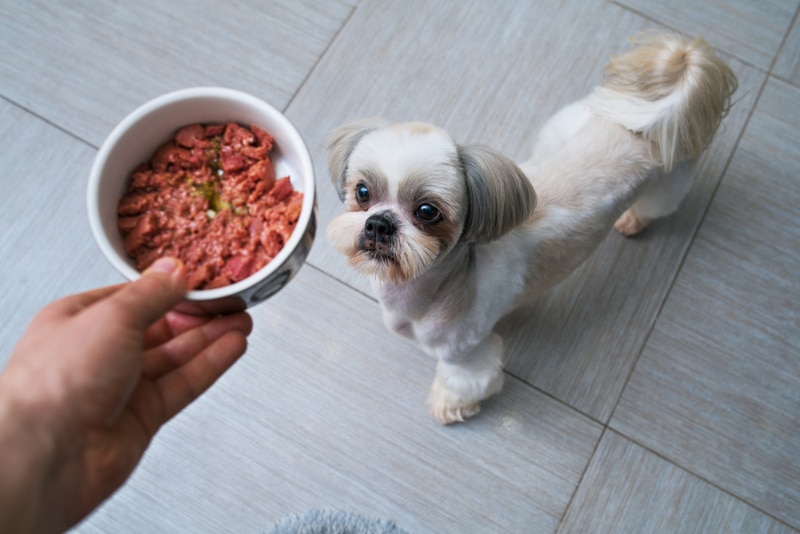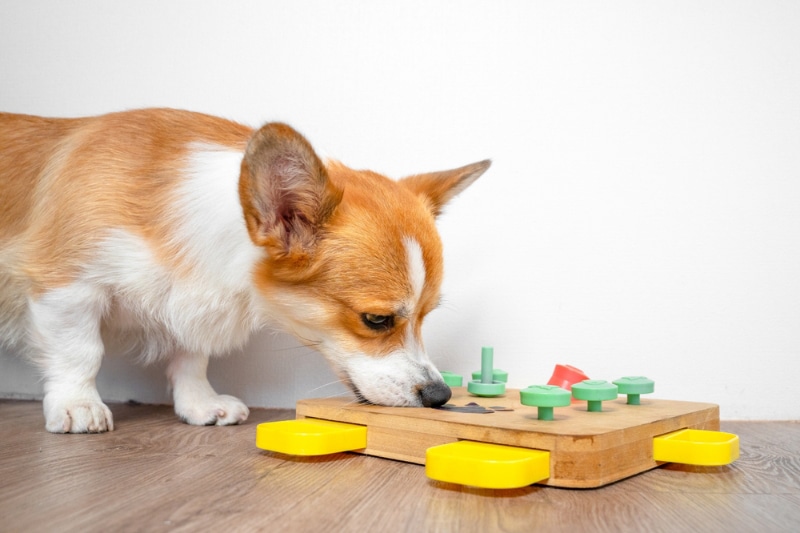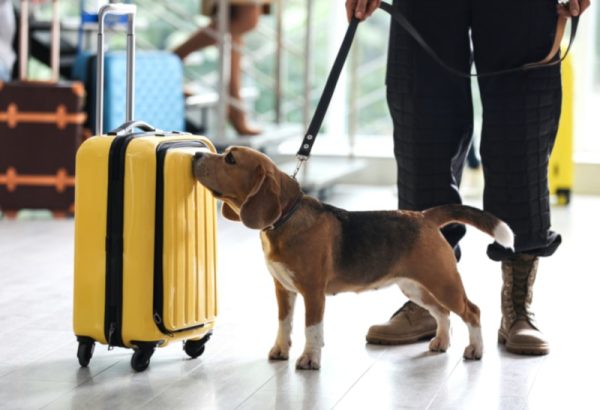Many pet owners prefer an individual taking care of their pets while away, as it’s less stressful than boarding them. It also reduces exposure to transmissible diseases and parasites. However, it doesn’t always go as smoothly as pet sitters, owners, or dogs would like.
Sometimes, dogs get depressed when their caregivers aren’t home. They may suffer from separation anxiety and become destructive. Other times, they won’t eat. That’s a problem if the pet has an underlying medical condition or is on either end of the age spectrum. We all want what’s best for the pet, and our tips below offer ways to encourage dogs to eat while their owner is away.

The 7 Tips for Getting a Dog to Eat When Their Owner Is Away
1. Follow Their Usual Routine
Many pet owners are good about leaving instructions regarding feeding and care. It’s very helpful for pet sitters to know what the dogs expect. We recommend following the dog’s daily routine as closely as possible. The more details an owner can provide about how they feed their pups, like what times they do it and how much is offered, the more it will seem normal. Do they call their dogs or make the kissy noise to let them know it’s time to eat? Does each pet have their special place and bowl?
Canines learn to make a positive association between cause and effect. The dog may only see the food and be anxious for some sort of sign that it’s ready for them. Sticking with their routine as closely as possible will help lessen the stress of an absent owner.

2. Treats Can Sometimes Be the Magic Cure
Treats are a magic cure for many things that ail a pet. Treats can teach them that it’s not so bad to get their nails trimmed or go for a ride in the car. Dogs can learn valuable lessons quicker through the use of treats, like when to sit or stay. Treats can also whet a pup’s appetite and nudge them toward the food bowl. It’s an excellent way to bond and build trust with the pooch as well.
Dogs are quick learners. It won’t take them long to figure out you’re another reliable food source, just like their owners. Just be sure that you’re not giving them too many!
3. A Special Treat
Another great way to encourage eating is the addition of something special, such as a meal topper. You can even use chicken broth poured over their food if caloric intake is a concern but make sure to get a low-sodium product. The new smell may attract the dog to the bowl and make it harder for them to ignore. You’ll likely find the dog will finish every morsel, but that’s not always the case.

4. Heating It Up
Sometimes, heating the food can entice an animal to eat. They’ll smell new aromas that are sure to get their attention. We don’t know if dogs know what comfort food is, however, a warm meal sounds better than something straight out of the fridge. Make sure the bowl and food aren’t too hot before setting it down for the meal, though.
5. Mind Their Personal Space
Some dogs are so easygoing that nothing seems to faze them, and they’ll eat without any issues. However, other pups are more mindful of what’s going on around them. You may find that simply walking away from the food area is another way to calm a nervous animal so that they’ll eat. They may have no problem with you entering the home but prefer to be alone when eating.

6. Offer Some Supervised Outdoor Time
We often find it helpful to build up an appetite with a brisk walk in the neighborhood or a rousing game of fetch before mealtime. That’s especially true if it’s a part of their normal routine. Make sure the dog has fresh, clean water available after their time outside—all the time, actually.
7. Interactive Playtime
Dogs are intelligent animals that need enrichment and mental stimulation for a good quality of life. The chances are a dog may be bored without the usual hustle and bustle of the household. Some interactive playtime can help relieve the stress and boredom of being alone. Toys that challenge them are an excellent way to engage them, especially if a treat is involved.


Alerting the Owner
If you are having a tough time getting a dog to eat while their owner is away, you should discuss the matter with them. The pet may be depressed because of the change in the routine. This may also be a one-off occurrence. It usually isn’t a problem if a dog misses the occasional meal. However, it can point to a medical issue or behavioral problem if it happens frequently.
We expect our pets to act differently when we’re away, and the sudden transition from an active household to a quiet one can be jarring. A heads-up will remind the owner to look for other signs of concern worth investigating when they return. We also suggest checking around the home to determine if the dog is scavenging when alone, meaning they may not eat simply because they aren’t hungry.
If you need to speak with a vet but can't get to one, head over to PangoVet. It's our online service where you can talk to a vet online and get the advice you need for your pet — all at an affordable price!

Conclusion
Leaving a dog is stressful enough, let alone if the dog won’t eat while the owner is gone. Change in the routine can upset some pets, making it necessary to coax them into eating. Luckily, canines are highly food-motivated. A few tricks can get their head back in the game and eating again. Making mealtime fun can go a long way toward a full belly and satiated pooch.
Featured Image Credit: Sergey Fatin, Shutterstock


















